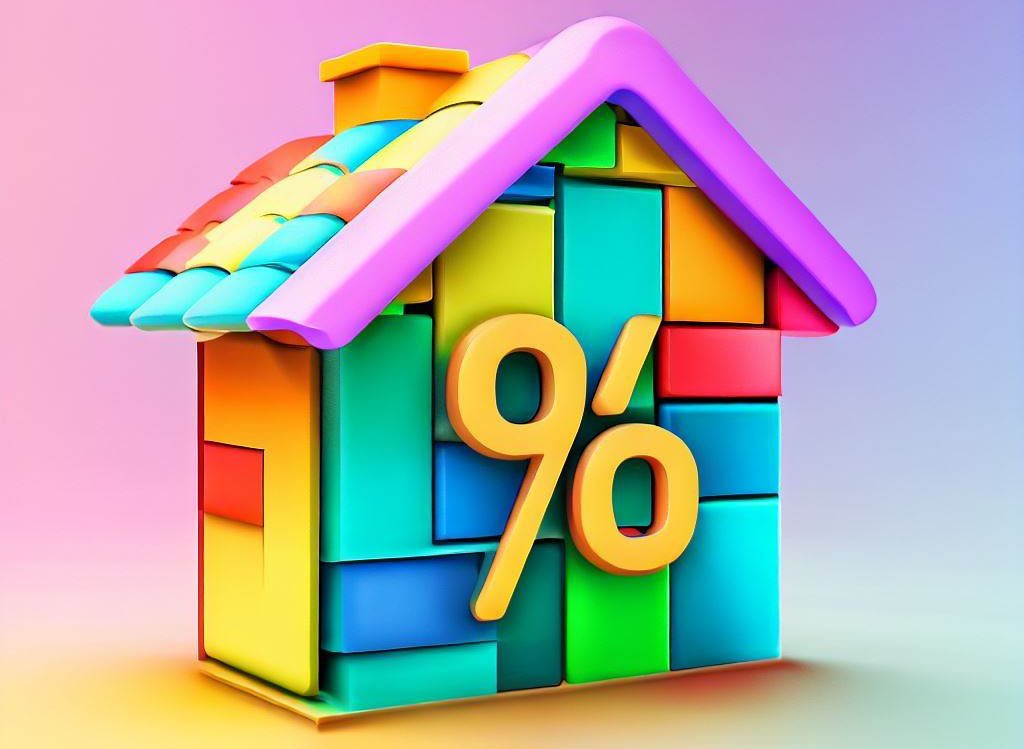Understanding the Mechanics, Risks, and Rewards of Interest-Only Mortgages: In the realm of home financing, the timing can often emerge as a significant challenge. The intricate balance of market conditions, finding your dream home, and having the necessary funds at your disposal to cover your mortgage can be a complex puzzle. You might discover your ideal property but find the immediate payment unfeasible.
For individuals grappling with fluctuating cash flow, the concept of interest-only mortgages emerges as a potential solution. This mortgage variant enables borrowers to make payments solely towards the interest on their loan for a predetermined period – typically extending up to a decade.
Interest-only mortgages hold the potential to be a valuable financial tool for specific types of borrowers, but they do come with inherent risks. One critical factor is that many of these mortgages incorporate an adjustable interest rate post the interest-only phase, leading to potentially high payments based on market fluctuations. Furthermore, there is a risk of grappling with larger payments than one can afford when the time comes to address the entire loan balance.
Deciphering Interest-Only Mortgages: A Glimpse into Their Nature
As the term suggests, an interest-only mortgage allows borrowers to initiate payments exclusively towards the interest component of the loan during an agreed-upon timeframe, usually during the initial years. Following this interval, the payment structure adjusts to encompass both principal and interest.
Unlike conventional mortgages where monthly payments cover both the fixed or variable interest rate and a portion of the principal balance, interest-only mortgages provide the flexibility of deferring principal payments. This period, which generally spans from seven to ten years, is characterized by making interest payments exclusively. Subsequently, the payment structure shifts to incorporate larger payments covering both principal and interest over the remaining period of the 30-year mortgage.
Upon the conclusion of the interest-only duration, these mortgages typically switch to an adjustable interest rate, causing payments to fluctuate in alignment with prevailing market trends.
Unpacking the Mechanics of Interest-Only Mortgages
The peculiarity of interest-only mortgages surfaces not only in payment amounts but also in terms of equity accumulation. During the defined interest-only period, borrowers make reduced monthly payments since only the interest component is addressed, leaving the principal untouched.
This unchanged principal balance during the interest-only tenure signifies that the subsequent payments will need to accommodate the deferred principal, resulting in higher post-interest payments.
Nevertheless, it’s important to grasp that interest-only mortgages introduce a considerable level of risk for both lenders and borrowers. From the lender’s perspective, these mortgages yield lower payments that do not contribute to reducing the extended loan amount. Consequently, lenders often set more stringent qualification criteria for this type of financing.
“To be deemed eligible for an interest-only mortgage, specific prerequisites must be met,” affirms Johnson, a financial expert. “These criteria may encompass factors such as a commendable credit score, a robust income history, ample cash reserves to cover interest-only period payments, and adequate property valuation to secure the loan.”
Pros and Cons of Interest-only Mortgages
For borrowers, these mortgages entail pros and cons. On the one hand, they offer a relief of lower payments during the predetermined timeframe, making them especially attractive for individuals with irregular income patterns.
These mortgages can prove favorable for those anticipating a substantial future income surge or individuals with erratic income streams like freelancers or commission-based workers. The flexibility of lower payments during lean periods can be a boon.
Furthermore, shrewd investors can leverage interest-only mortgages to unlock capital for more lucrative investments during the initial phase.
An intriguing aspect of interest-only mortgages lies in their potential as a strategic tool. Borrowers can allocate the funds not channeled into mortgage principal towards other investments, seeking returns surpassing the loan’s interest rate.
However, a balanced consideration of drawbacks is imperative. The variable rates prevalent in these mortgages could lead to higher overall interest payments. There’s the looming risk of being unprepared for the principal payment upon its maturity. Additionally, the accumulation of home equity experiences a delay in the initial years.
For those contemplating an interest-only mortgage, a level of certainty regarding income growth and property value appreciation is paramount. Collaborating with a financial advisor is prudent to ensure that the chosen path aligns seamlessly with your financial goals.
Conclusion: The Interest-Only Balancing Act
Interest-only mortgages tread the fine line between flexibility and risk, offering a tailored solution for specific financial scenarios. Their appeal hinges on the lower payments during the initial period and potential investment strategies. Yet, they come with the intricacies of adjustable rates, deferred principal payments, and possible higher interest costs.
As the modern landscape of homeownership evolves, understanding these unique mortgage instruments empowers individuals to make informed decisions. The delicate dance between lower immediate payments and long-term financial prudence is an intricate one, where collaboration with financial experts can guide borrowers towards a secure and rewarding homeownership journey.

